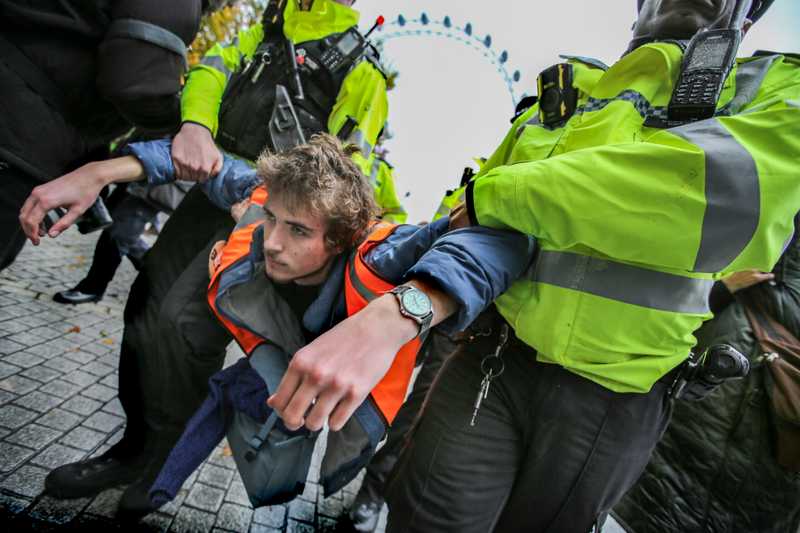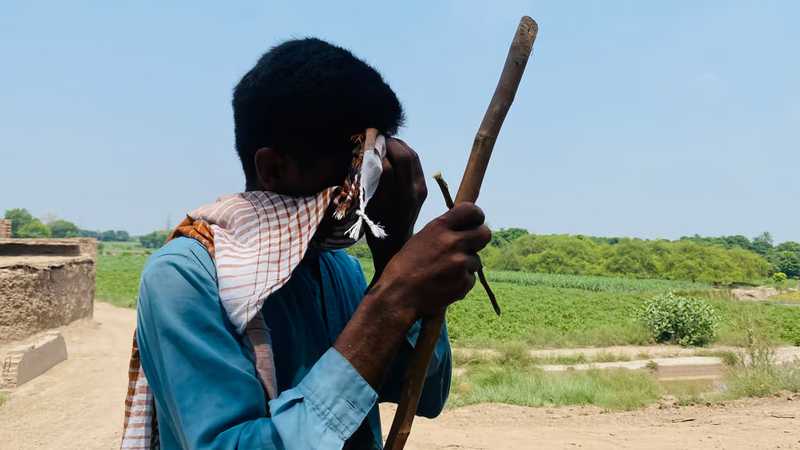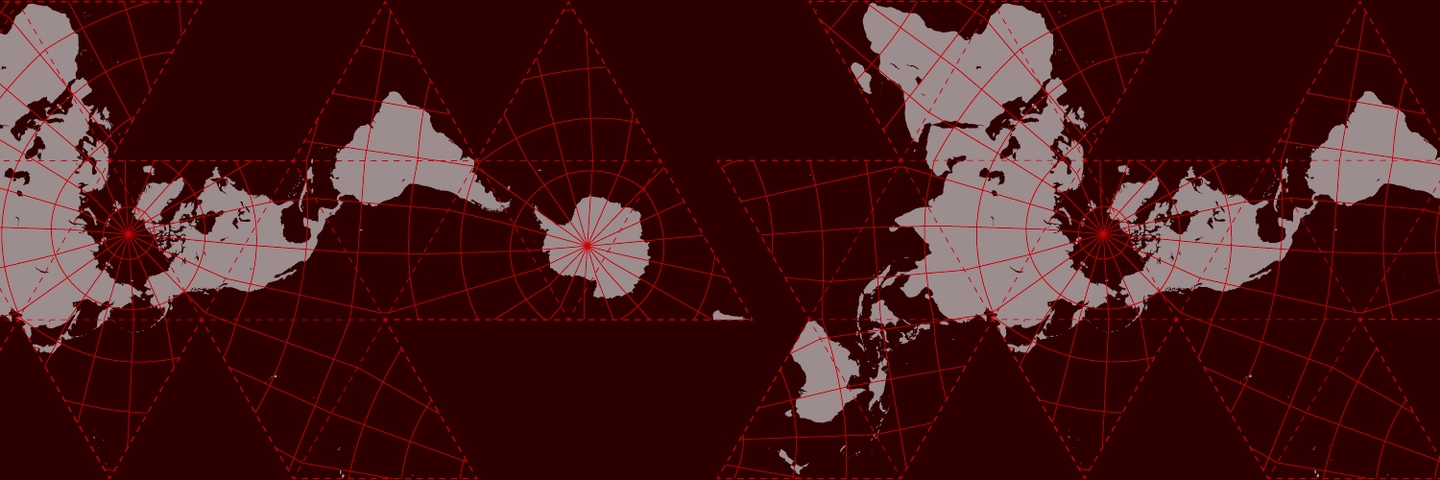
On the left: Egypt. The country was on lockdown, long before coronavirus made it commonplace. 42 road closures around central Cairo, riot police stationed in huge numbers in every major square in the country. From my window I could see the streets were empty. The regime was on high alert after a series of street protests the week before and were out in maximum force.
On the right: Greta Thunberg’s Climate Strike. Huge marches of people streaming freely through the city centres of Torino, Helsinki, Rome and beyond. The police standing by, banners held up calling for a sustainable future for the planet.
I remembered having signed up for email updates about the climate strike. After my address was registered a second page loaded, with a single question: Do you want to organise an action in your workplace or community?
I ticked No.
There were brave attempts at marches that day in Egypt – not for the climate, but against the regime. They were quickly subdued with tear gas and shotguns.
As the sun set, I scrolled and scrolled – but no break would come through police lines. On the right of my screen came march after Climate Strike march: Budapest, Naples, Barcelona. I stayed online for hours and watched as the sun rose over new cities and new marches: Montreal, Vancouver, Santiago de Chile, Valparaiso.
There would be over 4,000 arrests that week in Egypt. They continue to this day, the charges always the same. On April 28th 2020, Kholoud Amer, Head of Translation at the Alexandria Library, charged with spreading false news and belonging to a terrorist organization.
As I sat through the night, scrolling between those two timelines, a thought kept repeating itself: how can these two events exist in seemingly total independence of each other? It is impossible, of course, for us to stage a Climate Strike in Egypt. But why was there no Egypt in the Climate Strike?
Egypt – home to half a million refugees as well as its own hundred million plus – is on the frontlines of climate chaos; temperatures are rising; coastal cities will be lost; yields are shrinking, farmlands are sinking and the freshwater aquifer is being infiltrated by salt; harder, longer, rains routinely cripple cities while summer droughts run longer; talk of a water war with Ethiopia hums constantly. There are few places as vulnerable to the inequalities of global heating than Egypt.
If we are all bound to the same planet’s fate, how long can we continue to exist in these separate worlds?
***
It has long been understood that though it is industrialised nations that have spent the vast majority of the earth’s total carbon budget, the most immediate ecological consequences are going to be paid by the Global South.
We think of those consequences as the rising seas, stronger storms and faster floods. But it is not just an ecological price being paid, it is also a political one. For those living in resource colonies, carbon emissions are a guarantee of both atmospheric and administrative misery.
Egypt gives us a perfect example: a national economy nominally self-determining but at the crossroads of a series of regional competitions. It has a diversified energy mix, increasing solar and wind, large gas reserves and hydropower and would, in the traditional sense, be considered a post-colonial, independent nation.
A careful consideration of its position within the global hydrocarbon economy, however, complicates the picture. We will see how Egypt is bound by multiple interests within what I will call the Carbon Chain – the global industrial energy web erected by, and for, industrial capitalism to develop over the last 250 years. Like a food chain, it has apex predators (oil company execs, Vladimir Putin), mid-range carnivores (petro-state rulers, brokers, bankers), a spectrum of privileged mammals - and then everyone else.
In a region famously fraught with conflict and competition, an analysis of the Carbon Chain can give us new political insights. Within national borders, it can give us new tools for political animation and organization. Within supra-national movements, it can give us routes to new models of coordination. It can, in short, help bridge the gulf between our diverging worlds.
I will use Egypt as my example, but the method can be applied anywhere that uses fossil fuels. Which is everywhere.
The Carbon Chain 1: Zohr
Egypt occupies three different positions on the Carbon Chain. The first, least surprising, is as a resource colony. The Mediterranean Sea, the deserts and the Nile Valley are divided into a patchwork of hundreds of concessions owned by dozens of foreign oil and gas companies hunting and pumping oil and gas.
In 2015 the Italian energy giant, Eni, discovered the largest gas field in the entire Mediterranean and it was named Zohr. Egyptian oil and gas concessions offer a 50/50 split between the corporation and the nation, and Egypt declared that this discovery would provide the gas reserves needed to become energy independent.
The first gas was delivered in December 2017, but the following year, the cost of electricity rose by an average of 22.5% for domestic users.
Zohr’s profits are not reaching the populace, but are being used to pay off foreign debt. In April 2020, 40% of the state’s budget was spent on interest payments. Since the Sisi regime came to power foreign debt has tripled from $38bn to $110bn. Alongside an endless sequence of French fighter jets, German submarines and Russian helicopters bought to buy political favour,€8bn was spent on building power plants to convert Zohr’s gas into electricity. It was the largest contract in the history of Siemens and it was underwritten by a consortium of German banks at an undisclosed interest rate.
Energy independence, converted into debt bondage.
For the lowest-income households the price of gas jumped by 51%. The Sisi regime, in lockstep with the economic ideology of the International Monetary Fund, removed subsidies to gas, fuel and water while floating – and therefore devaluing – the national currency by 50%. An economic shock of austerity capitalism that required a military state to impose it on the populace, the regime’s debts are shouldered by the people – now and forever, as even future politics are bound by unrepayable debts.
Within the Carbon Chain there is, therefore, a clear pyramid of: overall winners Eni, Siemens, Germany and Italy; the mid-level grifters of the Sisi regime; and the net losers of the Egyptian populace and the earth’s atmosphere. I.e. everyone.
Every day Zohr pumps out the carbon equivalent of the entire daily output of Austria, burning through the planet’s carbon budget so that a minor dictatorship can pay off odious debts drawn to keep up levels of industrial export of northern weapons and fossil fuel technologies.
Every day, the gas being sold from under Egyptian’s seas is coming slowly back to us as a flooding sea. New projections for 2050 indicate Alexandria will be entirely submerged.
The Carbon Chain 2: Leviathan
The second largest gas field in the Mediterranean is called Leviathan, and it has had a much more complicated route to production.
Since Israel’s self-realization on the coastal plain of Palestine it has had an enduring Achilles heel: energy. The one sliver of territory between Casablanca and Isfahan seemingly without reserves of fossil fuels has long been reliant on imports from allies.
In 2008, one of Mubarak’s key acolytes, Hussein Salem, engineered a deal to build a gas pipeline from Egypt to Israel. The Egyptian public were enraged, but powerless to stop it. Not only was Mubarak selling gas to the nation’s enemy: he was selling it at less than market value. At the time Turkey, Greece and Italy were paying between $7 and $10 per million BTUs, Israel – with no other pipeline import option – was paying $4.
The pipeline came to be one of the symbols of the craven Mubarak regime. When he was put on trial in 2011 the prosecutor would allege that this short-selling cost the public $714m – though energy specialists have said the number could be as high as $11bn.
During the freedoms of 2011-2013 the pipeline was blown up twelve times. On the thirteenth, the government stopped repairing it.
Then Leviathan was discovered off the coast of Haifa. A host of messianic opinion pieces declared Israel to be truly God’s chosen people.
The catch, though, was that to make it financially viable to exploit the well, Israel would need to export gas for sale. Domestic use alone did not offer an attractive enough rate of return for investors wary of the rapidly changing landscape of a decarbonizing world.
For years Leviathan sat unexploited. Israel lacked the infrastructure to liquify and ship the gas out in tankers or to pipe it to another country. Until Jordan stepped in with a $10bn purchase order and construction began on a new pipeline. Followed by Egypt with a $15bn proposal to reverse the flow down Mubarak’s pipeline to the gas export terminal on the north coast where Leviathan’s gas would combine with Zohr’s and turn Egypt into an exporting energy hub.
The deal was signed in 2018 by a company called Dolphinus Holdings: a shell company that the Egyptian newspaper, Mada Masr, uncovered was controlled by Egypt’s General Intelligence Services.
From Leviathan, three neighboring regimes now interlock through a physical infrastructure of gas pipelines. Egypt, in this instance, holds a higher position in the Carbon Chain, where it is not a resource colony but a colonial enabler – enriching and further entrenching the colonial power in Palestine.
Leviathan, thanks to the ability of the Egyptian, Jordanian and Israeli regimes to co-ordinate and interlock, will now burn; the Arab world will remain fragmented and incoherent as Palestine is further whittled away; Egyptian and Jordanian military elites will be further enriched; the equivalent of all of Germany’s CO2 emissions in a year will be spent from the planet’s carbon budget.
The Carbon Chain 3: Aramco
There can be no consideration of petroleum politics without Saudi Arabia, the colonial petro-state to end all others. Saudi Arabia’s vast petroleum wealth has long been the fuel for a regional network of ideologues, preachers and media outlets; of jihadists and sectarian warriors; and, more recently, of proxy governments. It diverts part of its stream of wealth to American and British weapons companies in exchange for regional protection and complex hardware with which it remains unable to defeat asymmetrically underequipped neighbors in warfare.
Since the eruption of the Arab Spring, Saudi Arabia and the United Arab Emirates have been increasingly active underwriters of local reactionaries: offering sanctuary to Tunisia’s Ben Ali, waging a disastrous air war on Yemen, financing Sudan’s transitional military council, clumsily intervening in Libya and Syria, maintaining Bahrain’s police state, kidnapping Lebanon’s Prime Minister and attempting to broker the final abandonment of Palestine as part of Trump’s Deal of the Century.
In Egypt, the Sisi regime has been kept afloat by a stream of loans, gifts, investments, joint ventures and island-purchases worth at least $78bn. A staggering amount of money that has disappeared into the black hole of Egyptian cronyism. There are ideological and logistical reasons: Saudi Arabia despises the Muslim Brotherhood almost as much as it does Iran, and supported their military coup from power. Logistically, Egypt is a crucial transit country for Saudi oil, which passes through the Suez Canal and a key pipeline that connects the Red Sea to the Mediterranean.
Egypt, here occupies the lowliest position on the Carbon Chain: vassal state, transit country.
***
Resource colony, colonial enabler, vassal state, transit country. All points Egypt occupies within the Carbon Chain – a global web made up of thousands of points of contact between infrastructure, states, corporations, geography, history binding the entire planet together in intersections of power and repression; and of vulnerability and opportunity.
The Carbon Chain has been 250 years in the making, spinning out on sailboats from Southampton, Antwerp, L’Orient and Kiel landing in Manila, Rio de Janeiro, New Orleans, Port au Prince, Calcutta, Hong Kong: a relentless roll-out of slave ships, iron rails, asphalt roads, shipping canals, telegraph wires, radio waves, oil pipelines, satellite stations, container units, and fiber-optic cables that have bound the world into an ever-tighter union of space and time, collapsing differences between continents, creating a unified global hierarchy of class and caste.
The winners, at times, have fought wars with each other. But since the collapse of the Soviet Union we have been watching the clear emergence of a supra-national united class actor with a shared language and uniform ideology of: Progress, Security, and Stability.
Progress: the removal of regulatory conditions that seek to contain international capital’s profit motive.
Security: the development and implementation of techniques of population control.
Economic Stability: the maintenance of national governments that sustain the local conditions for international capital to make returns.
From Davos to Wall Street to Sao Paolo to Beijing a global 1% has emerged who have accumulated a level of wealth previously only disruptable by a major war.
The scariest prospect for our future is not war, however, but that this will be our enduring peace. The wars of today are wars of the rich against the poor, counter-insurgency wars, wars on Terror, on drugs, on crime. They are police wars. Elites worldwide are entrenching themselves behind uniform security systems: mass surveillance, militarized law enforcement, hard borders, while mobile capital is kept safe and untaxed in offshore banks. Whatever buffering role a middle class once played between the elite and labour is being replaced by the elite’s expanding security apparatus.
In Egypt’s case we enjoy the twin blessings of the colossal bureaucracy of a socialist state established to intervene in nearly all aspects of life, now operating on a dogma of hard austerity — a fusion of Stalin and Reagan that reduces state functions to little more than the violent protection of resource wealth for its accomplices, both domestic and alien.
The Egyptian state has become one vanguard of today’s elite fusion and expends vast energies to keep its citizens atomized and unable to organize: it controls and fragments public space as it strangles and silences political life; itdismembers independent cultural output while ‘harmonizing’ mass media; it works relentlessly to engineer a public sphere defined entirely by corruption, guaranteeing opportunities for division and conflict across all daily interactions.
But the Carbon Chain can give us ways to see beyond – to seethrough – the ugly corporeality of our current regimes.
Let us look again at Egypt’s three positions within the Carbon Chain. In each, we can see opportunities for political action and thought that cannot be contained by either repressive state actors or their extractive backers.
The Carbon Chain 1: Inter-national Solidarity
Zohr is owned by Italy’s Eni, with minority stakes held by Russia’s Rosneft (30%) and Britain’s BP (10%). Currently, there is no way for those of us physically in Egypt to stop Eni from pumping gas. But carbon extracted from Egypt burns into our shared skies.
In countries with democratic infrastructures, complicit corporations can be targeted with direct actions and lawsuits, elected officials’ backers can be scrutinized, legislation can be designed and fought for, elections can be contested.
We are currently witnessing an international wave of potentially significant lawsuits. There are 15 major climate liability cases currently in US courts: the city of Baltimore is suing for the cost of flood defences, San Francisco for the price of its sea wall, the state of Rhode Island for the devaluation of coastal property. The landmark Juliana vs the United States case — brought by 21 youth plaintiffs — now approaching its sixth year, is one of dozens of cases worldwide in which children are suing for violations of their future rights.
There have already been notable victories, the most significant of which, Urgenda vs the Netherlands, has ordered the Dutch government to cut its emissions to 25 percent below 1990 levels this year. Urgenda is the precedent for some 1,442 cases filed around the world claiming — in various ways — that governments are violating their citizens’ human rights by not acting to maintain a clean, livable environment.
It is quite conceivable that a company such as Eni could be vulnerable in its home jurisdiction of Italy on a number of fronts: from Italians’ own right to a healthy environment and shared Mediterranean Sea, to charges of working against Italy’s own stated foreign policy (as laid out in the recent Universal Periodic Review), to investigations into financial and bookkeeping matters, or as accessory, accomplice or material supporter of a military regime that wears its human rights abuses as a badge of honor, and has murdered at least one Italian citizen: Giulio Regeni.
But it is not only Eni propping up the Sisi regime from Rome. On the front lines of state violence we see an Italian logo bearing down on us in a riot van’s headlights: Iveco. The morning after, we pick up bullet casings and read the word Fiocchi. When we place tape over our computer cameras and leave our phones in microwaves it is Milan’s Hacking Team and Area S.p.A. we are trying to hide from.
The Egyptian state, with Italian hardware, maintains a “stable business environment”. Italian capital, fleeing Northern regulation, finds a happy home in this Southern dictatorship, where unions are long hollowed out and industrial actions can be met with military-grade strikebreakers. Italy’s labor crisis (33 percent of youth currently unemployed) is intimately connected with cheap labour in foreign autocracies and the high rate of returns the combining elites enjoy by keeping their capital supra-national.
This business environment must be destabilized, North and South.
On September 27th, watching those twin timelines, I saw Climate Strike marches in Munich, Milan, Paris and Waterloo, Ontario. Those four cities host the headquarters of the companies that develop and sell the six key pieces of technology that we know of that make up the Egyptian regime’s ‘Electronic Grip’ of digital surveillance. Munich’s Gamma International and Trovicor, Milan’s Hacking Team and Area SpA, Paris’ Nexa and Waterloo’s Sandvine.
A map of Egypt’s oil and gas concessions from 2019 shows the country divided into 195 distinct geographical areas for exploration by state, local and international energy companies. That year a total of 20 international energy companies were operating in Egypt. They have headquarters in London (BP, Perenco, SDX, Pharos), Houston (Apache, Apex), Paris (Total, Perenco), Hamburg (Dea), the Hague (Shell), Rome (Eni), Dublin (Petroceltic), Moscow (Lukoil), Kiev (Nafto Gas), Zagreb (Ina-Nafte), Santiago de Chile (Sipetrol) and Calgary (TransGlobe).
There were Climate Strikes in each of those cities.
The business environment must be destabilized. The opportunities for a new inter-national solidarity of substance surround us.
The Carbon Chain 2: Leviathan & Supra-national Solidarity
We are enmeshed within capitalism’s networks of communications. How better can we use them to coordinate efforts between spaces now divided by hard borders and economic boundaries?
I have called the examples above inter-national solidarities – they happen between people existing within their distinct nations. We should also consider supra-national opportunities that we can discern by following the links in the Carbon Chains that surround us.
In the legal arena, Saúl Lliuya, a Peruvian farmer, is currently suing Germany’s largest electricity producer, RWE, in a German court. He argues that RWE should pay for 0.47 percent of his town’s flood protections: 0.47 percent is estimated to be the company’s annual share of global greenhouse gas emissions. Though initially dismissed, the case is now moving forward in the Essen regional appeals court.
In the Philippines the country’s Commission on Human Rights has set a global precedent with its inquiry into how the 50 publicly-traded “carbon majors” have impacted the human rights of Filipinos. The Commission states that it “seeks to determine liability issue against companies that are not domiciled in the Philippines on the basis of trans-boundary effects of their business operations.”
The Filipino Commission on Human Rights estimates that Eni is responsible for 0.41% of the totalCO2emissions since 1751. What is 0.41% of the cost of the coastal defences required to protect Alexandria? What is 0.41% of the cost of the agricultural land we are losing to a salinification that cannot be held back with a wall? What is 0.41% of the cost of the bleaching of the natural wonder of Sinai’s coral reef?
What new cases can be built in supra-national coordination between those in the Climate Strike cities and those locked into resource colonies?
The Boycott, Divestment and Sanctions movement for Palestinian rights gives us the best example to build on. A central Palestinian committee, the BNC, issues guidelines and suggestions for principles of action and legitimate targets: multinationals whose infrastructural works break international law, banks with holdings in weapons companies, consumer brands turning profits with Israeli state institutions, cultural events receiving funding from Israeli government ministries, and so on. This open framework, in which guidelines are issued that allow any member of the public to become involved, has allowed the BDS movement to gain momentum year after year for fifteen years, raising a global political economic consciousness about consumer choice, allowing an easy entry-point to political engagement for people around the world as it claims significant economic and cultural victories.
This model should be built upon, and perhaps a body like the Progressive International is the right framework for it. It could create a supra-national committee for carbon boycotts with a rotating body of members from Global South countries designating companies headquartered in the North to be added to a blacklist. Every year twenty companies could be added to the list, along with guidelines and directives for how they can be targeted. These would include energy companies, of course, but should also be extended to companies occupying obscurer, strategic positions on the Carbon Chain.
Such a committee, if well-resourced, could then develop a portfolio of information to offer annually to the public, including analysis of the 20 companies’:
- Legal architecture: As discussed above in the cases of Eni and RWE, the committee could research legal and jurisdictional possibilities, combine plaintiffs with lawyers, help assemble class action. The committee would provide a technical and logistical mechanism for the combination of South and North needed to bring such cases to trial. Of the 50 Carbon Majors, only two are headquartered in a jurisdictional territory where they could not realistically have a case brought against them: Russia’s Lukoil and Yukos. The rest are all in North America, Europe, Australia, Japan and South Africa.
- Economic composition: The committee could publish divestment strategies, information about shareholders, about investment and pension funds that hold stakes. 2020 has already seen a marked shift in the language of asset managers – most notably from BlackRock, the world’s largest, who announced they dump investments with a “high sustainability risk” – a fluid idea that needs to be pushed beyond simply selling off coal assets.
- Public presence: For the average consumer it is simpler to boycott some companies than others. The committee should publish maps of supply chains, information about consumer-facing subsidiaries and, in the case of utilities, localized renewable alternatives. Tools to help people read the economic landscape that surrounds them. Alongside economic pressure, the annual blacklist should be a source of cultural pressure, sparking social media critique, media scrutiny and popular consumer campaigns. It should carry with it suggestions for direct actions, mapping public-facing holdings.
Such a committee could become a vital forum for a new chapter of supra-national coordination needed to confront the supra-national profiteering enjoyed by the major outfits at the top of the carbon chain and their mid-level beneficiaries. It could also be a useful arena for South-South coordination: we in Egypt have much to learn, for example, from Nigeria and the multiple lawsuits filed against supermajors – Eni included – in recent years.
Finally, it might facilitate the coordination needed to run multi-year, multi-country campaigns. Take, for example, Siemens. As mentioned above, they recently won the largest contract in the company’s history to build three combined cycle power plants in Egypt. These facts, taken alone, do not present a realistic target for a boycott campaign. But consider that, in 2019, Siemens withdrew its tender to build an extension of the Jerusalem Light Rail: a controversial infrastructure project to further cement the colonization of Jerusalem by Israel. Siemens’ withdrawal was the result of several years campaigning by BDS activists. It was, however, instrumental in building the hydrocarbon infrastructure in Egypt that has allowed Israel to export Leviathan’s gas. There was an opportunity for a supra-national effort there, we must not miss the ones in the future.
The Carbon Chain 3: Aramco & The End of Oil
The end of industrial capitalism will collapse the Saudi regime and evaporate their regional network of reactionary proxies propped up by their previously limitless petrodollars.
Saudi Aramco – the world’s most ‘valuable’ company, the central asset of the Saudi regime and the singular source of the most pollution in history – has gone up for sale. Why? Why sell the backbone of your country to investors guided only by profit extraction? Because time is running out.
The price of renewables drops year after year. We are now within touching distance of it being cheaper to build new wind and solar than it is to maintain existing thermal plants. 79% of European coal generators – undercut by renewable competitors – are already running at a loss. Renewables, even by conservative International Energy Agency (IEA) estimates, will match coal outputs within five years. India’s emissions still grew 2% last year, but it was the lowest increase for 20 years as wind and solar have surged. Every month a new record is set for low-cost photovoltaic power. A landmark new report (again, from the conservative IEA), declared that offshore wind has the capacity to meet the entire world’s energy demands 11 times over.
All of which was before the force majeure of the coronavirus. The price war sparked by Mohammed Bin Salman in March, combined with global collapse in demand, saw oil prices plunge briefly into negative territory as US storage filled up; the oceans are currently dotted with Very Large Crude Carriers operating as floating depositories for oil with nowhere to go; Warren Buffett offloaded all of his shares of US airlines, saying that the industry would likely never fully recover; workers in heavy industries have demanded their plants be repurposed for medical equipment; the mayors of 40 major cities have published a joint statement committing their recovery plans to greater equality and climate resilience, working quickly to encourage cycling and increase public space; a major policy paper that surveyed 200 central bankers and finance ministers from around the world found common agreement that economic recovery efforts must reduce carbon emissions.
There is an opportunity to make 2019 the year that oil peaked.
On the other hand, both China and the USA have suspended environmental protections, bailed out polluters and handed tax breaks to airlines; major corporations are poised to swallow countless smaller competitors; cheap oil will encourage consumption, health concerns will boost car use; coal imports are up 35% in China; deeper surveillance and border controls will be enthusiastically embraced by some segments of societies and in every country, without fail, it is the poorest who suffer the most.
The moment we are in is pregnant with both danger and possibility.
The end of the petroleum age will radically alter the political status quo across the world, most particularly in North Africa and West Asia, where control of hydrocarbon resources is a defining feature of the Algerian military regime; the Libyan fragmentation; the intra-Sudanese hostility; Turkish war-footing in the Mediterranean; Kurdistani territorial suppression; the Saudi-Iranian cold war; Trump’s ‘take the oil’ Syria policy; Emirati and Qatari proto-imperialism; the destruction of Iraq; and the Azeri, Kazakh, Turkmen and Uzbek dictatorships.
There was a political and technological momentum building across the world that is being accelerated now by COVID-19. By working to end the Petroleum Age, we are also working to end the governing politics of the age.
Decarbonization and decolonization are not separate political projects, they are mutual accelerants.
***
Both Bernie Sanders and Jeremy Corbyn placed the Green New Deal at the centre of their electoral offer, and both were defeated – in large part by the interior machinations of their own parties. Today, Green Stimuli and Green Recovery Programs are offered from the radical left to the neoliberal center. The idea of what is ‘green’ is itself to be contested.
Would it be green to subsidize the rollout of electric cars for individual ownership? Technically, yes: fewer combustion engines means lower carbon emissions. But the battery for each electric car requires a significant amount of cobalt, 75% of which is mined in the Democratic Republic of Congo, mostly under terrible, ‘artisanal’, conditions. Corporations with batteries at the centre of their products such as Apple and Tesla have made promises over the years to ‘improve supply chain visibility’ or remove cobalt from their batteries altogether, but it has not happened.
Cobalt is one example among dozens of the future complexities of decarbonization. A recent study by the European Commission concluded that for Europe to fully decarbonize by 2050 will require a massive increase in current world supplies of raw materials. In order to build the wind and solar infrastructure needed to power the European Union, 300% of all the germanium currently produced in the world will be required; 40 times the current supplies of indium, gallium, tellurium, cadmium and selenium; the current global production of copper, glass, steel, concrete, aluminium and plastic will need to increase by 20 times. And that’s just to decarbonize the EU.
The resource rushes that drove the colonization of the Americas and Africa are not over. Northern Green Recovery programmes could play out very badly for those living in the resource colonies. If not twinned with a serious politics of decolonization it is easy to see how Southern dictators will be permanently accommodated as long as they ensure supply lines of key minerals; how even semi-functioning states will collapse into tantalum republics of artisanal quarries ruled over by minor warlords; how, once the EU has reached net zero emissions, the old Savage Nations will be re-cast as primitive polluters and the massive carbon and colonial debts they are owed will simply be forgotten.
Swathes of Africa, Asia and Latin America will be sacrificed to ‘save’ the planet. It is a future, in other words, not dissimilar to our present.
Which brings us back to now and the vital necessity of a Global Green New Deal.
It is impossible to predict what the coming months will bring. A major reorganization of our world is already underway: an unprecedented depression has begun, oil is in crisis, resurgent nation-states are being handed extraordinary police powers, unparalleled surveillance measures are being embraced and each day brings closer the possibility of a cascading collapse of financial and political systems.
Who knows where we will be a year from now?
The Overton Window — the shifting spectrum of ideas considered politically palatable — has been thrown so completely open in these past weeks that almost any future has become possible. Who would be surprised if, three years from now, we find ourselves living in a global system of constant biometric surveillance, led by the newly dominant Chinese superpower, that reorganizes the world into a hierarchy of health so as to ensure no future disruption of market growth.
Equally possible would be massive social reorganization around public health as populaces around the world — knocked for a moment out of the supposedly unstoppable rhythms of capitalism — emerge from their lockdowns to a collapsed economic order and demand it be rebuilt on principles of sustainability, transparency and community with a continued primacy of human and ecological life over the market’s demands.
Through history’s cycles of crisis there are opportunities in the moment of reconstruction.
We are approaching one now.
A version of this essay originally appeared in Mada Masr as Carbon Colonies & A Green New Deal in January 2020. It has been significantly updated for publication here.
Photo: Pikist






